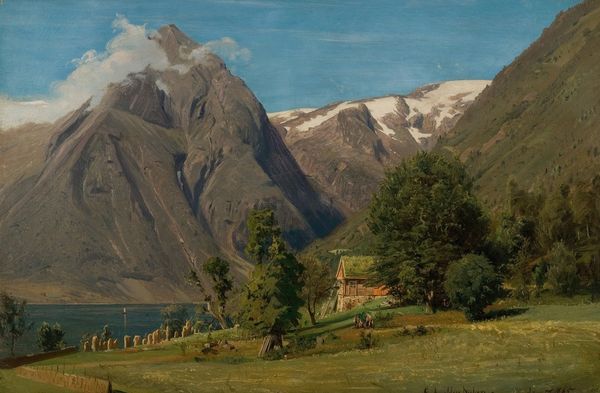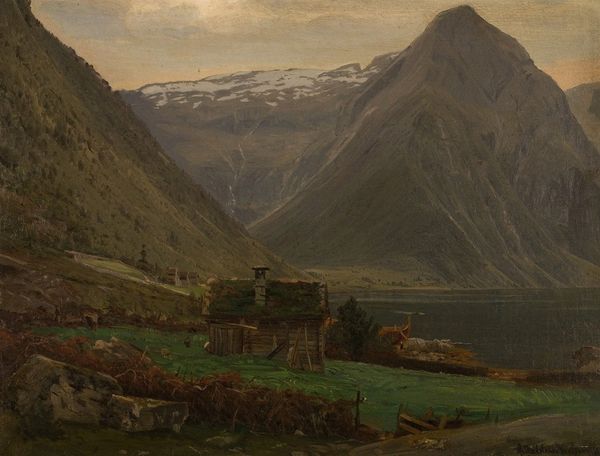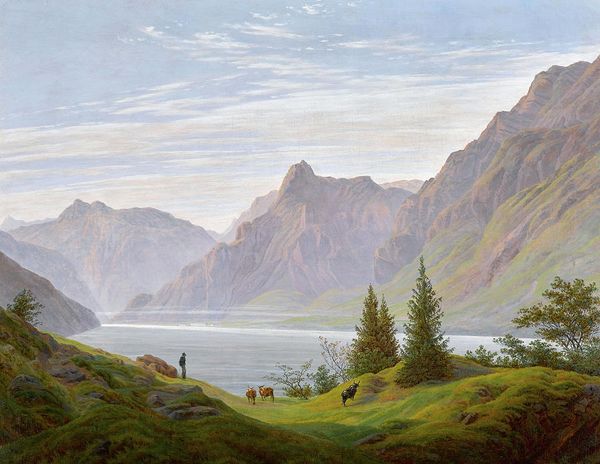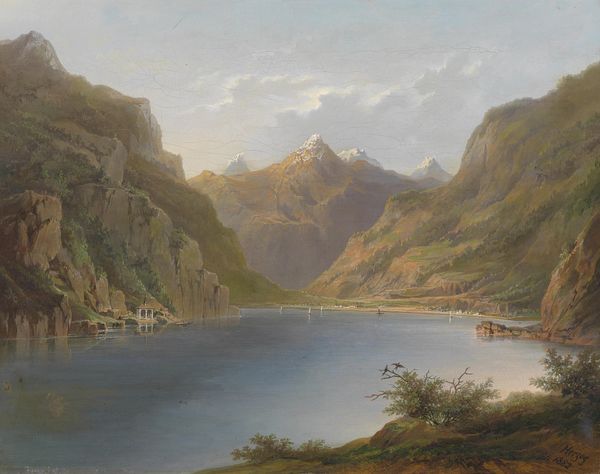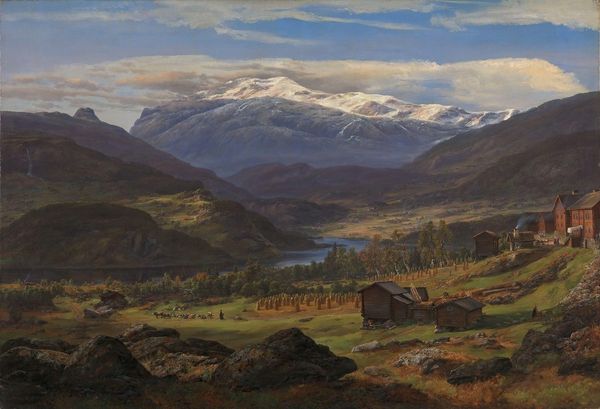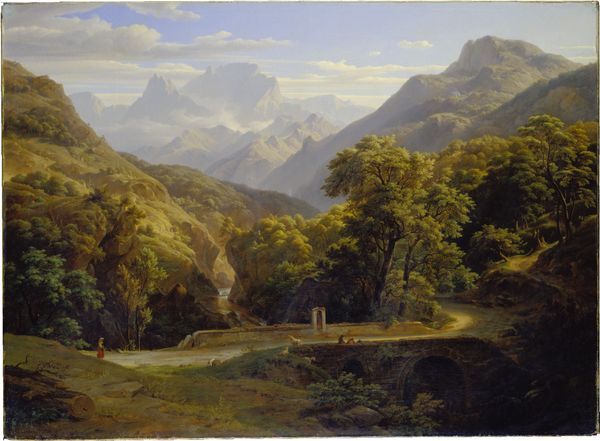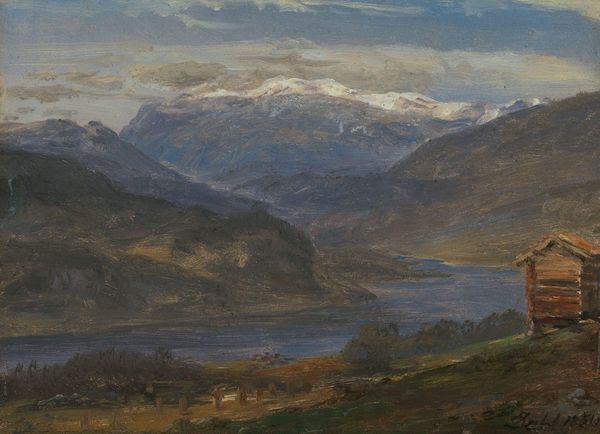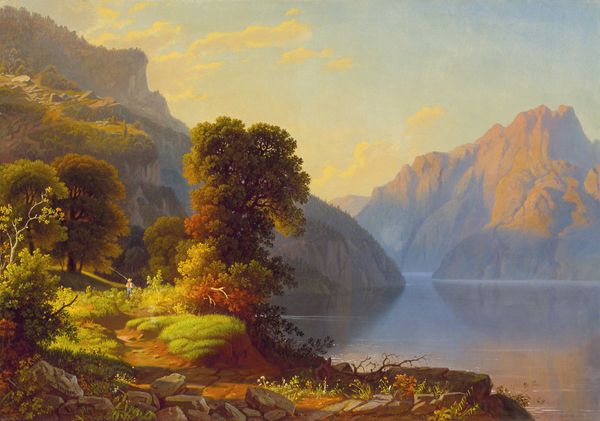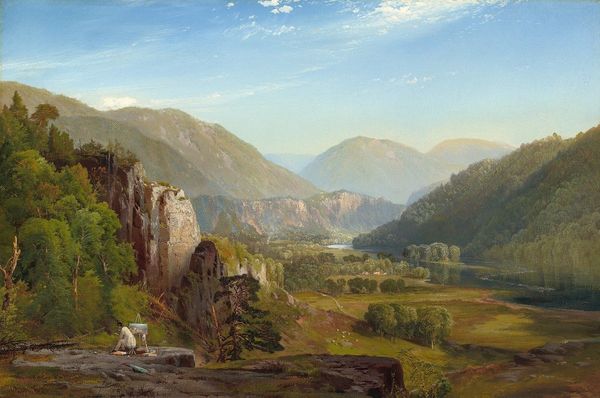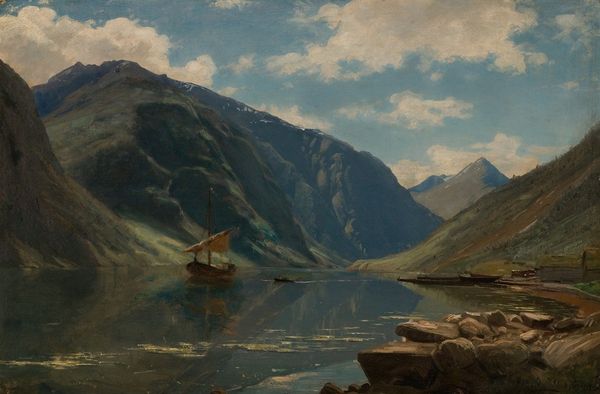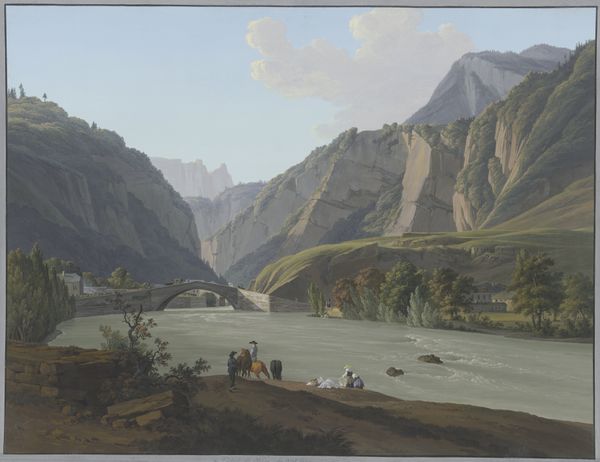
View of Odda at the Sør Fjord in Hardanger, Norway. Morning Light 1836
0:00
0:00
painting, oil-paint, canvas
#
painting
#
oil-paint
#
landscape
#
oil painting
#
canvas
#
romanticism
#
realism
Dimensions: 32.1 cm (height) x 44.7 cm (width) (Netto)
Curator: Here we have Louis Gurlitt’s “View of Odda at the Sør Fjord in Hardanger, Norway. Morning Light,” completed in 1836. It’s an oil painting on canvas. Quite the mouthful of a title, isn't it? Editor: Yes, but perfectly descriptive! My first impression is that it's incredibly serene, like time slows down in that light. The scale of the mountains makes you feel wonderfully insignificant. Curator: That feeling is exactly what many artists, writers, and thinkers were exploring during the Romanticism movement. This painting embodies the era's fascination with nature, especially its sublime and awe-inspiring aspects. We must understand these paintings and their connection to national identity and power. Editor: It also makes me think about how our perception of nature has shifted. Back then, it seems nature was this grand, almost godly thing. Now, we worry about preserving it, our impact as…sinful even. Curator: Absolutely, and Gurlitt here emphasizes a harmonious relationship between the figures and the environment. Note how those local people blend in as part of the scene and how the natural setting looks as productive farmland. Editor: It’s funny you point that out, it felt so untamed, almost pure, but you’re right; you see the subtle markers of human integration that don’t jar you out of this sublime state. The placement of those little homes... Curator: They reflect a romantic ideal. This imagery became useful as nationalism spread and art became the main way of propagating national narratives. These sublime vistas are linked to notions of freedom and rugged individualism, ideas so tied to state-building and control. Editor: So, essentially, paintings like these are idyllic propaganda? Curator: Propaganda might be a harsh word, but it's not wrong to say it supported the growing nationalism and romanticizing the homeland in response to industrial expansion. I guess it served its purpose... to showcase nature's strength. Editor: Exactly. I leave with the realization that this isn't just a pretty picture; it is also part of a carefully curated perspective on landscape and national identity. Curator: I would echo that, I will always view Romantic landscapes with a slightly more suspicious but much more well-informed eye.
Comments
No comments
Be the first to comment and join the conversation on the ultimate creative platform.
